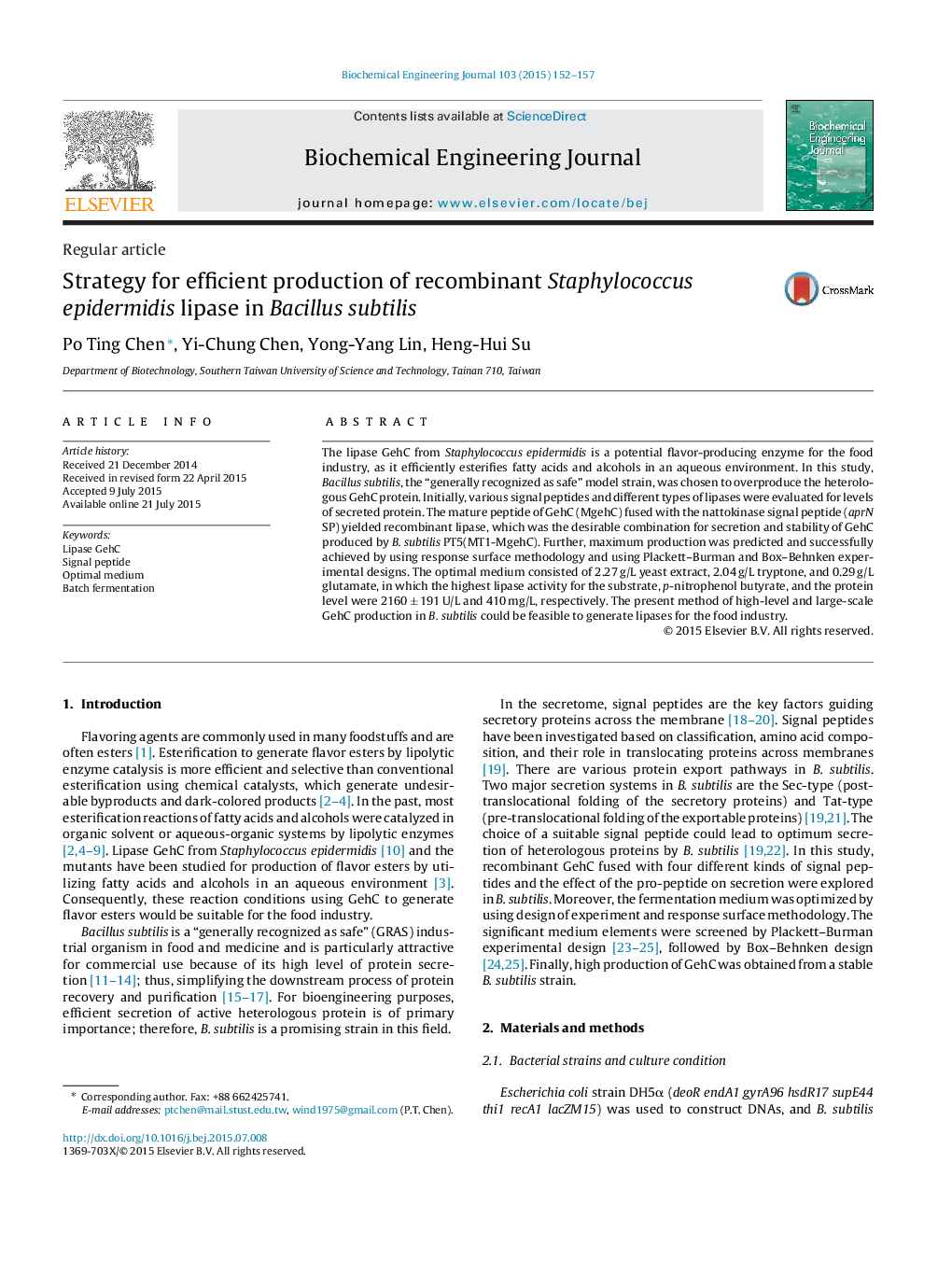| Article ID | Journal | Published Year | Pages | File Type |
|---|---|---|---|---|
| 6484032 | Biochemical Engineering Journal | 2015 | 6 Pages |
Abstract
The lipase GehC from Staphylococcus epidermidis is a potential flavor-producing enzyme for the food industry, as it efficiently esterifies fatty acids and alcohols in an aqueous environment. In this study, Bacillus subtilis, the “generally recognized as safe” model strain, was chosen to overproduce the heterologous GehC protein. Initially, various signal peptides and different types of lipases were evaluated for levels of secreted protein. The mature peptide of GehC (MgehC) fused with the nattokinase signal peptide (aprN SP) yielded recombinant lipase, which was the desirable combination for secretion and stability of GehC produced by B. subtilis PT5(MT1-MgehC). Further, maximum production was predicted and successfully achieved by using response surface methodology and using Plackett-Burman and Box-Behnken experimental designs. The optimal medium consisted of 2.27 g/L yeast extract, 2.04 g/L tryptone, and 0.29 g/L glutamate, in which the highest lipase activity for the substrate, p-nitrophenol butyrate, and the protein level were 2160 ± 191 U/L and 410 mg/L, respectively. The present method of high-level and large-scale GehC production in B. subtilis could be feasible to generate lipases for the food industry.
Keywords
Related Topics
Physical Sciences and Engineering
Chemical Engineering
Bioengineering
Authors
Po Ting Chen, Yi-Chung Chen, Yong-Yang Lin, Heng-Hui Su,
